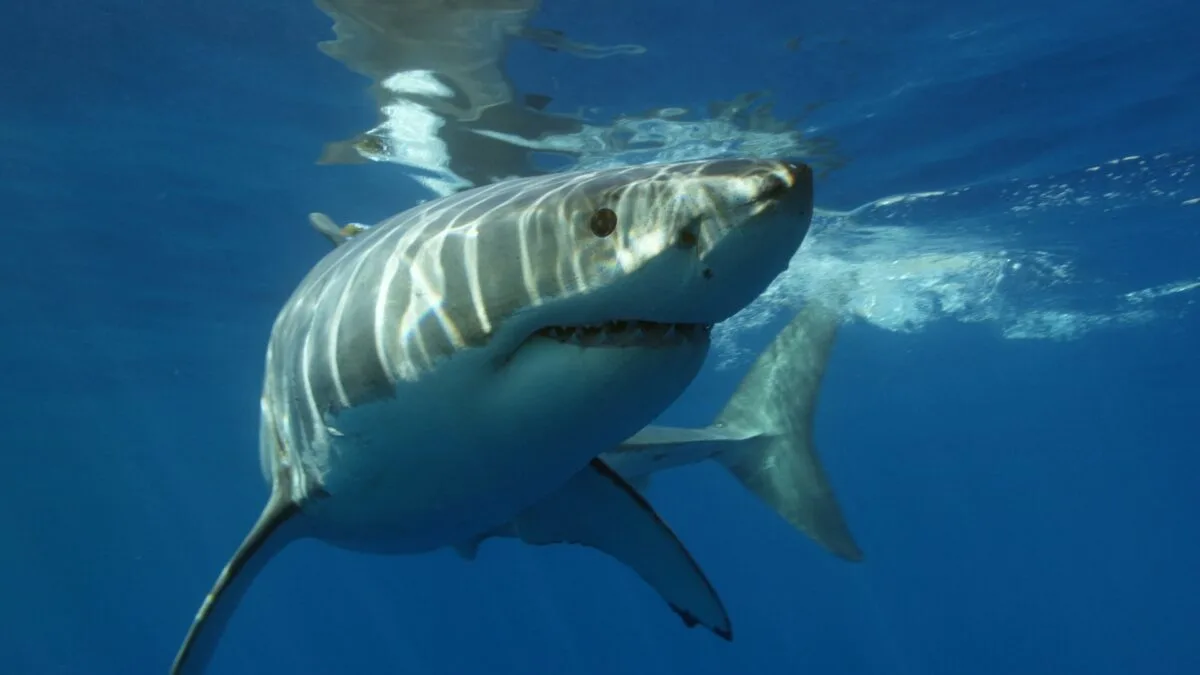The fascination of two incredible creatures, the Great White Shark vs. Spotted Gully Shark, has captivated the minds of many!
Welcome to the world of sharks as we compare these two very different shark species and see who would come off on top in a fight.
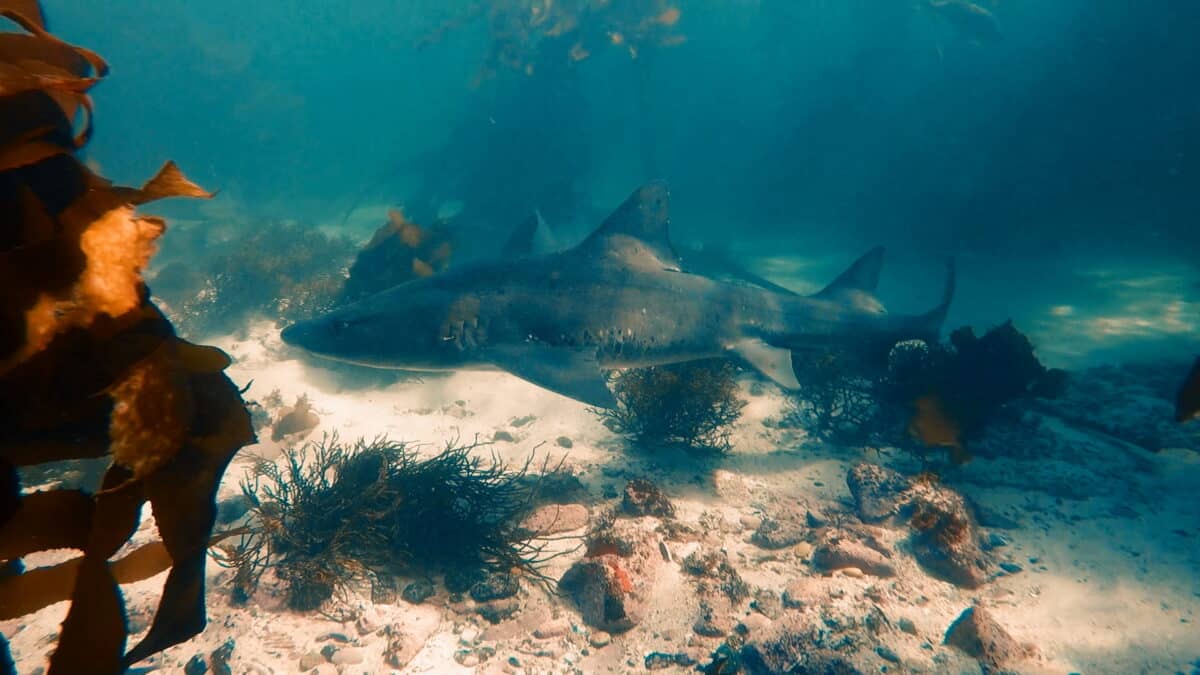
Want to jump ahead? Click below
Introduction
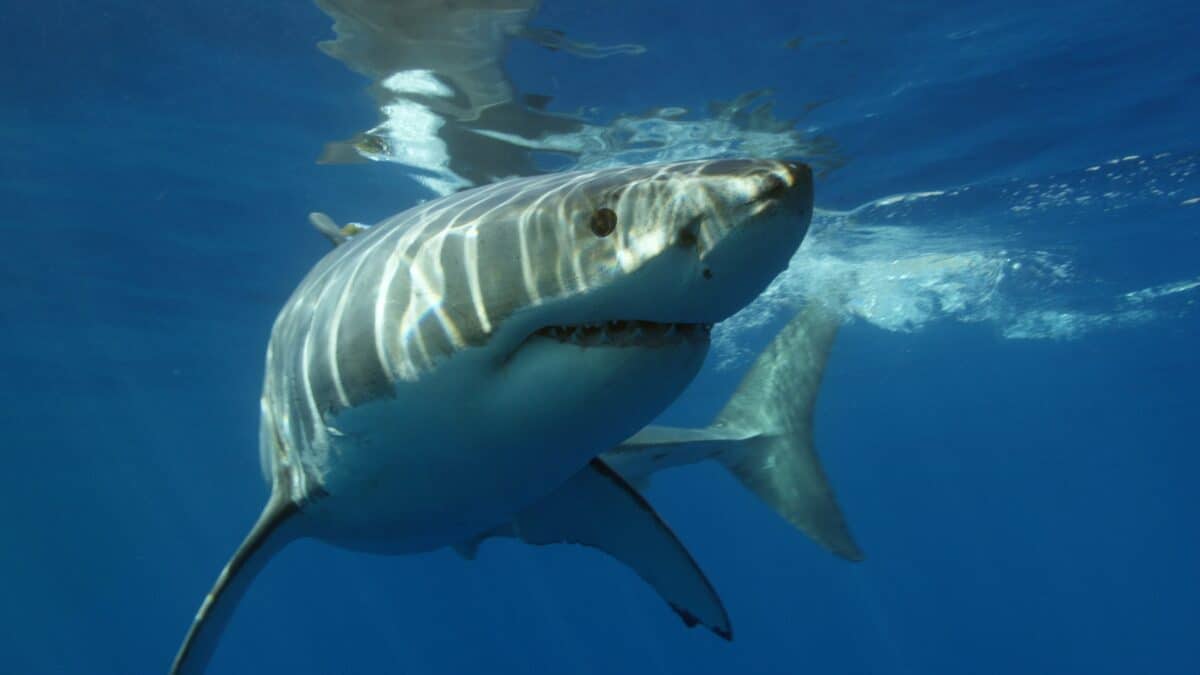
The Great White Shark and the Spotted Gully Shark stand out as formidable creatures in the vast realm of oceanic predators. This comparison aims to meticulously analyze their physical characteristics, unique behaviors, inherent strengths, and potential vulnerabilities. Furthermore, we will explore plausible scenarios during a face-off between these two sharks and address their threat to human populations.
Physical Characteristics
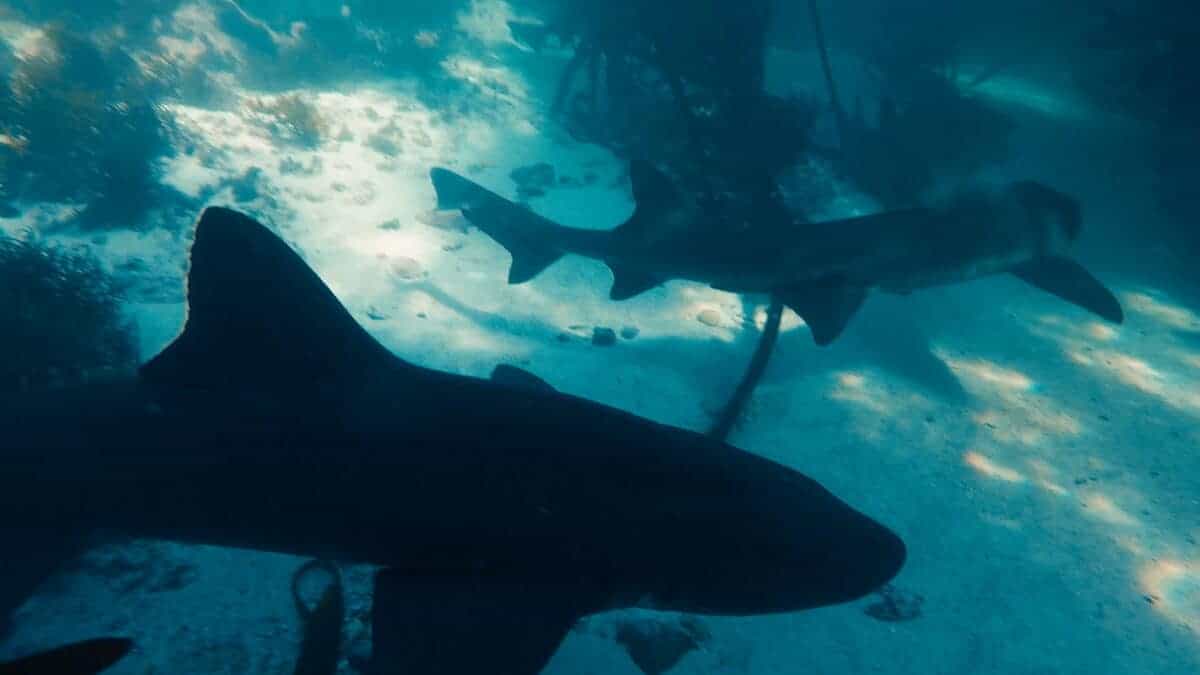
The Great White Shark (Carcharodon carcharias) is renowned for its immense size, with mature individuals reaching lengths of up to 20 feet (6 meters) and weighing around 5,000 pounds (2,268 kilograms). It possesses a streamlined body, a conical snout, and powerful jaws filled with razor-sharp, triangular teeth.
On the other hand, the Spotted Gully Shark (Triakis megalopterus) is comparatively smaller, growing to about 5 feet (1.5 meters) in length and weighing approximately 100 pounds (45 kilograms). It features a slender body with a rounded snout and possesses small, sharp teeth.
Unique Behaviors
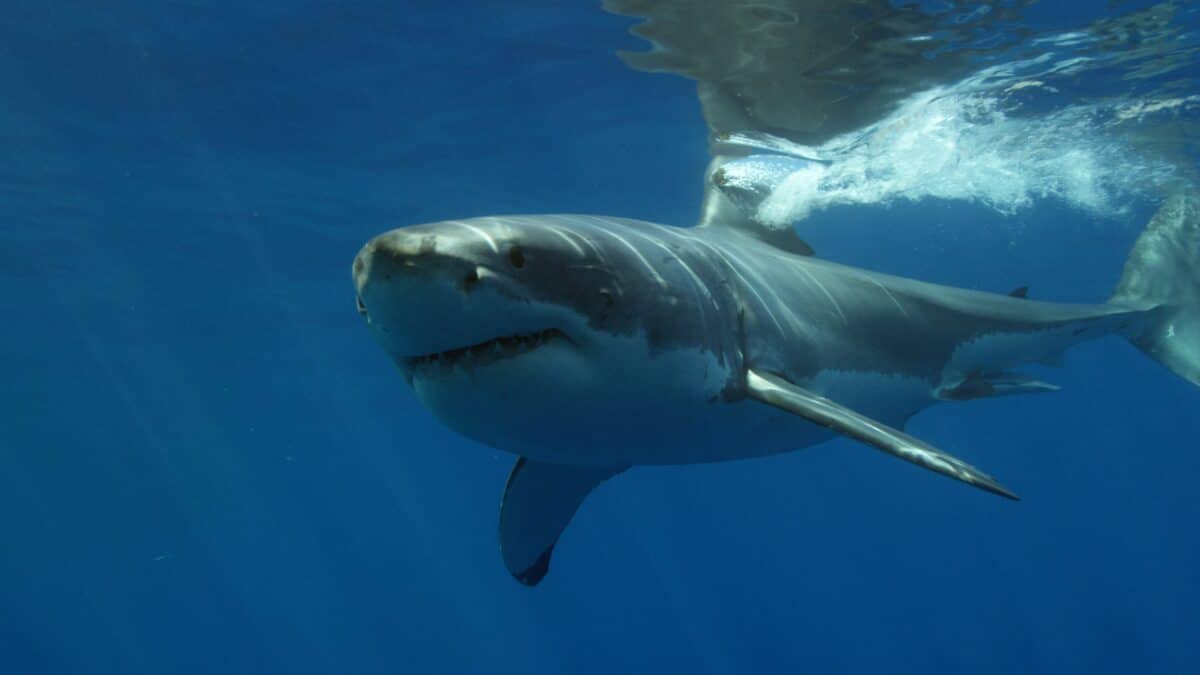
Great White Sharks exhibit distinct behaviors, such as breaching the surface and launching their bodies out of the water during hunting expeditions. They are also known for their ability to engage in “spy-hopping,” where they lift their heads above the water surface to observe their surroundings.
Spotted Gully Sharks are primarily bottom-dwellers, often found near rocky reefs or sandy seafloors. They are nocturnal hunters, venturing to feed on bony fish and crustaceans at night. Unlike the Great White Shark, they do not exhibit breaching behaviors.
Inherent Strengths and Vulnerabilities
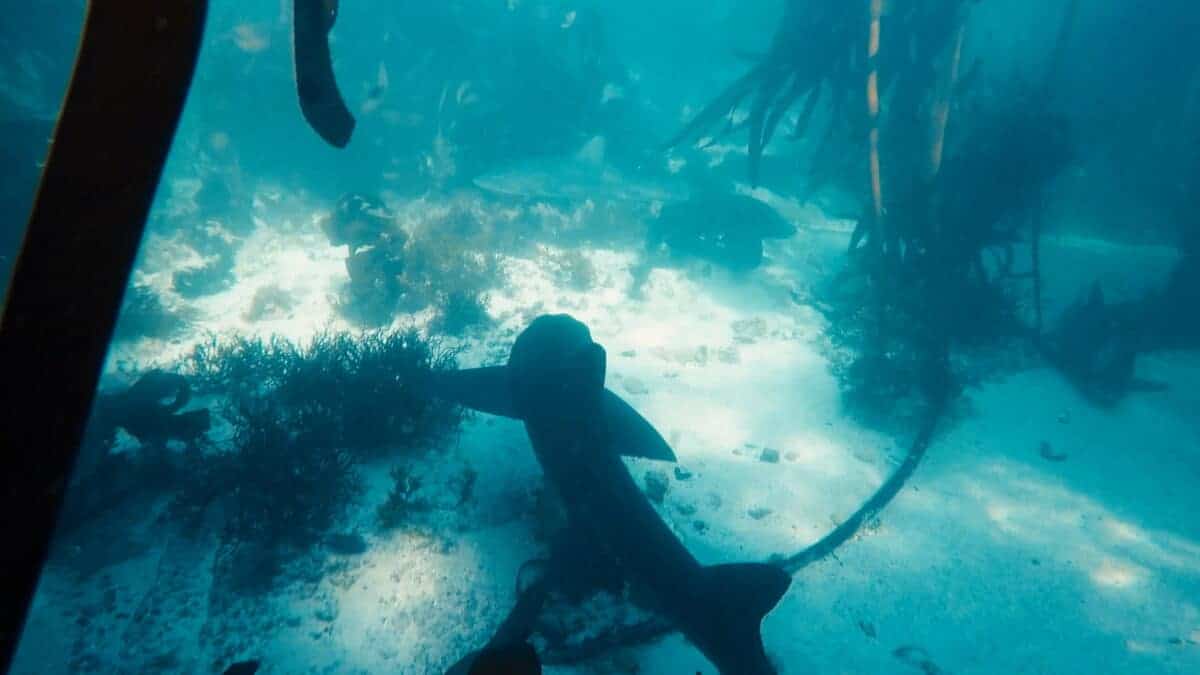
The Great White Shark’s primary strength lies in its size, power, and speed. With a top speed of around 25 miles per hour (40 kilometers per hour), it can swiftly close the distance to its prey. Additionally, it possesses an exceptional bite force of up to 4,000 pounds per square inch (psi), allowing it to incapacitate large marine mammals easily. However, its girth and energy requirements make it less agile, requiring it to rely on ambush tactics during hunts.
While the Spotted Gully Shark lacks the size and speed of its larger counterpart, it compensates with maneuverability and adaptability. Its smaller size enables it to navigate tight spaces and hunt in reef environments where larger sharks may struggle. However, it has a relatively weaker bite force than the Great White Shark, limiting its ability to prey on larger animals.
Face-off and Threat to Humans
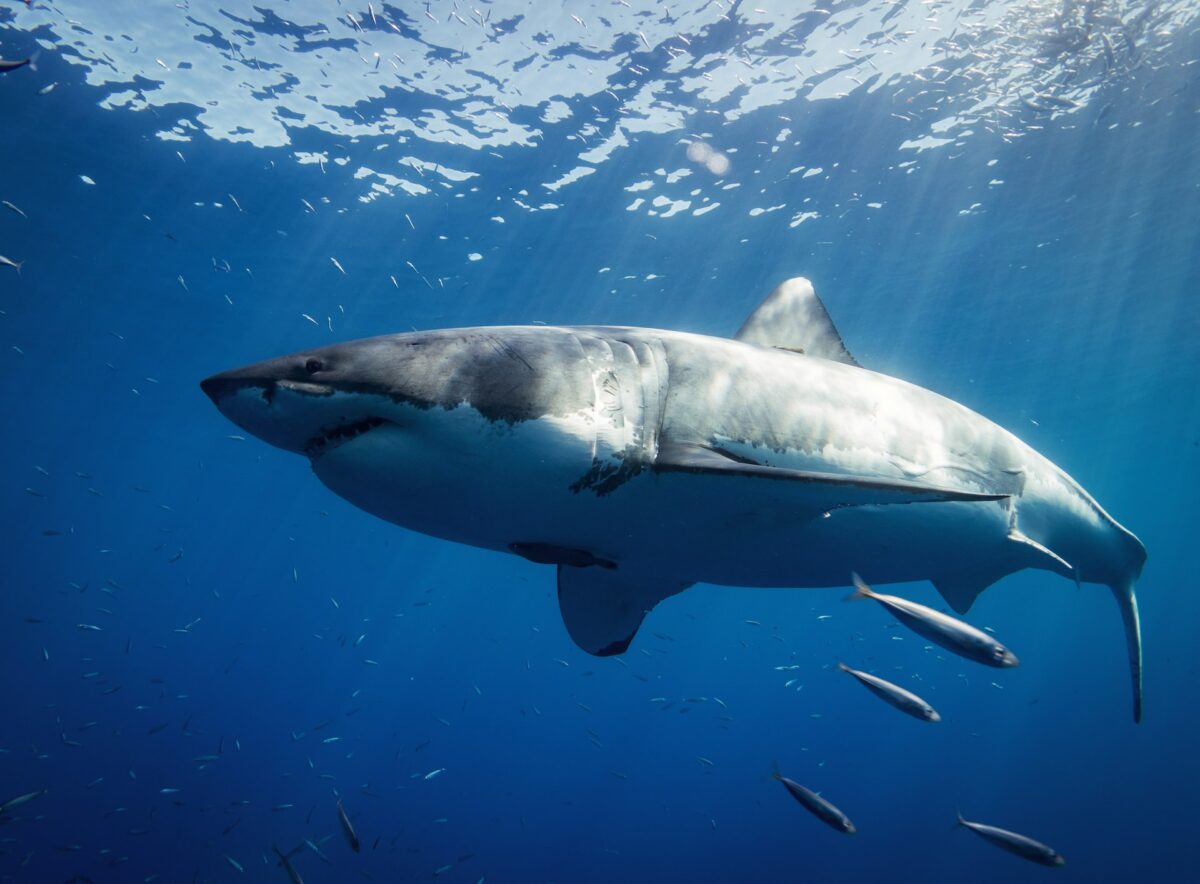
In a hypothetical face-off, the outcome largely depends on the environment and circumstances. If the encounter occurred in open water, the Great White Shark’s size and power would likely give it an advantage. Its predatory instincts and bite force would make it a formidable opponent for the Spotted Gully Shark.
However, if the face-off took place in a reef environment, the Spotted Gully Shark’s agility and familiarity with the surroundings could level the playing field. It could exploit its maneuverability to evade the Great White Shark and escape safety.
It is crucial to note that while these sharks possess formidable abilities, they are not typically a direct threat to human populations. Attacks on humans are rare and often occur due to mistaken identity or curiosity rather than predatory intent. Respect for their habitats and caution when engaging in water activities can minimize the risk of hostile encounters.
Geographical Habitats and Dietary Patterns
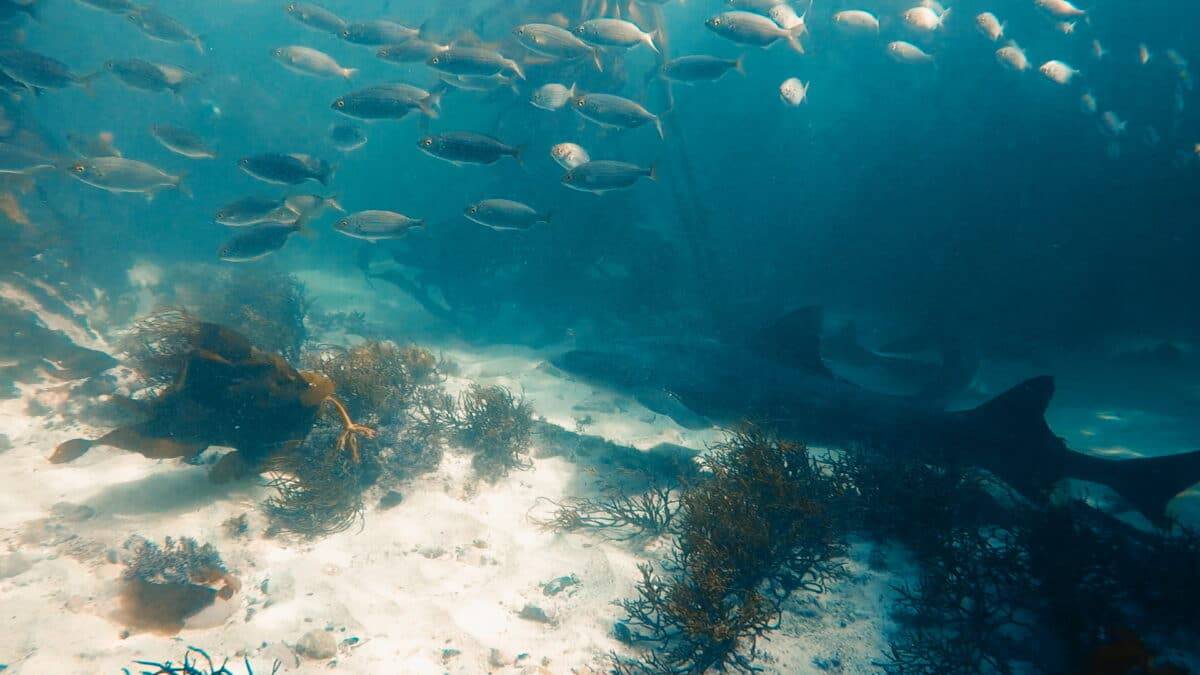
Evidently, Great White Sharks are found in various oceans globally, favoring temperate coastal waters. They migrate long distances, following their prey and seeking suitable mating grounds. Additionally, their diet consists primarily of marine mammals, including seals, sea lions, and small cetaceans.
While Spotted Gully Sharks have a more localized distribution, predominantly inhabiting the coastal waters of South Africa. Furthermore, they prefer rocky reefs and sandy areas near the shoreline. Their diet primarily consists of bony fish, crustaceans, and occasionally cephalopods.
Dimensions, Speed, and Bite Force
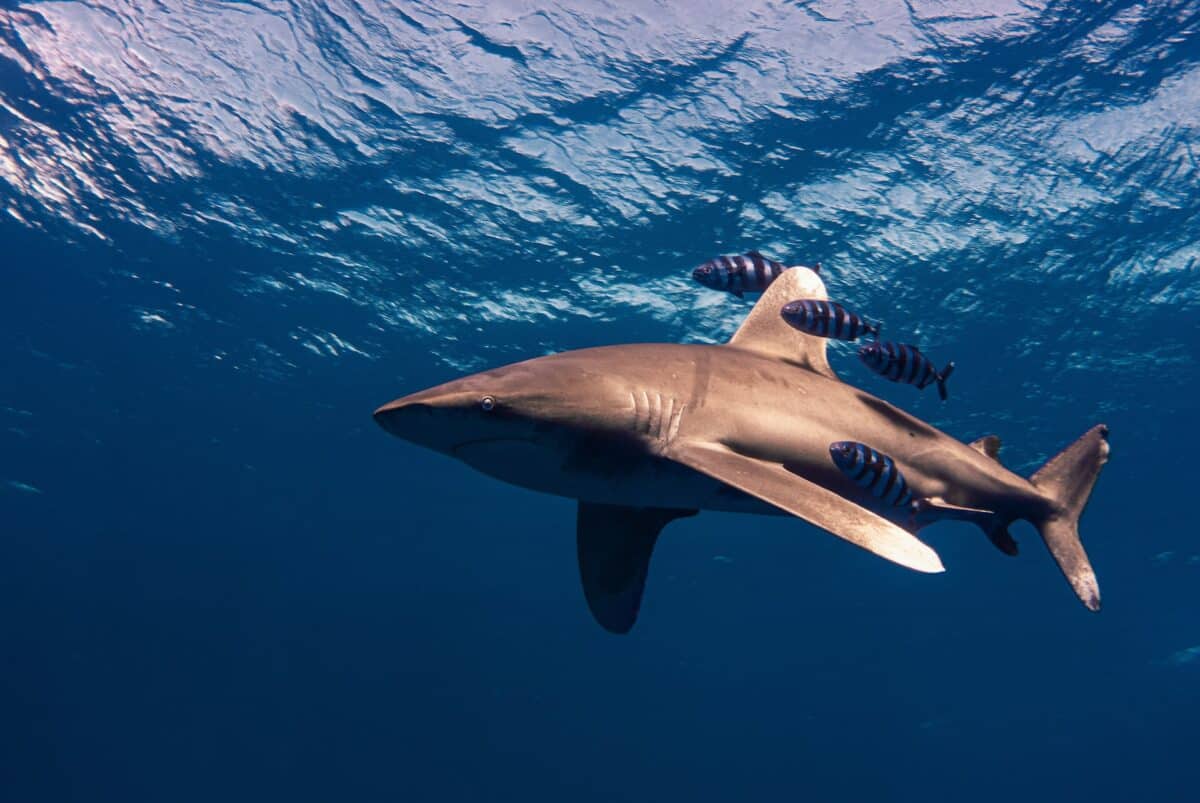
| Shark Species | Length (ft/m) | Weight (lbs/kg) | Top Speed (mph/kph) | Bite Force (psi) |
|---|---|---|---|---|
| Great White Shark | Up to 20/6 | Up to 5,000/2,268 | Up to 25/40 | Up to 4,000 |
| Spotted Gully Shark | Up to 5/1.5 | Up to 100/45 | Unknown | Less than 1,000 |
Cognitive Abilities and Sensory Mechanisms
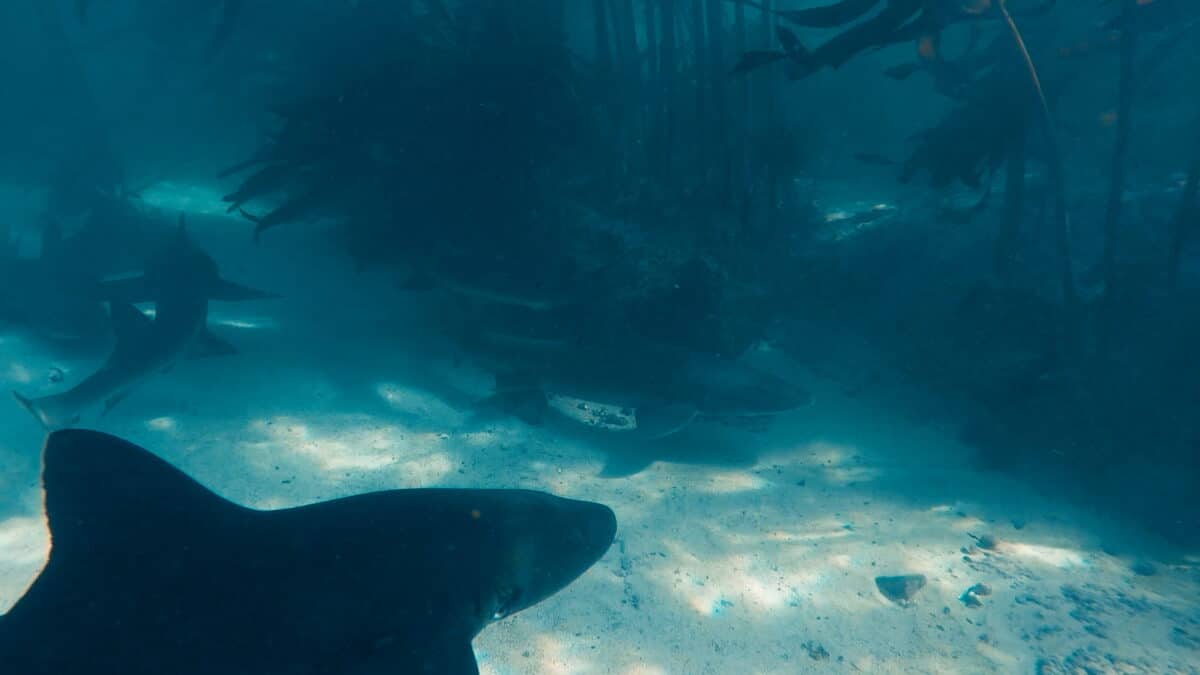
Both sharks possess well-developed senses, but the Great White Shark is known for its keen sense of smell, capable of detecting a single drop of blood in several gallons of water. It also has excellent vision and can discern colors, aiding in prey detection.
While less studied, the Spotted Gully Shark likely possesses similar sensory mechanisms but may not exhibit the same cognitive capabilities as the Great White Shark. Further research is necessary to understand their cognitive abilities fully.
Aggressive Capabilities and Hunting Strategies
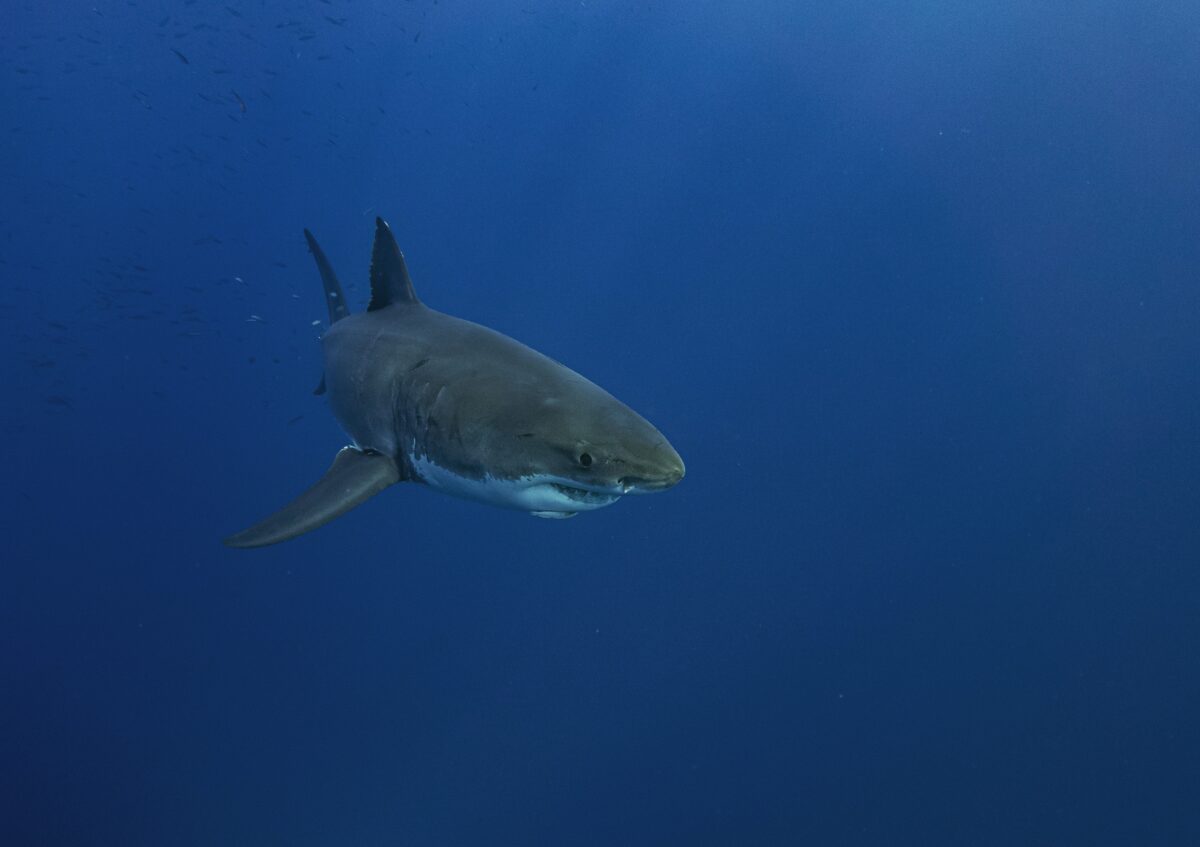
Great White Sharks are apex predators, employing ambush tactics and bursts of speed to surprise their prey. They often breach the water’s surface to seize marine mammals swimming near the top. Their aggressive nature and powerful bite force allow them to immobilize their prey swiftly.
Spotted Gully Sharks adopt a more opportunistic feeding strategy, primarily hunting at night when their prey is less alert. They rely on stealth and agility to catch smaller fish and crustaceans. Their hunting behavior aligns with their nocturnal and bottom-dwelling lifestyle.
Key Points
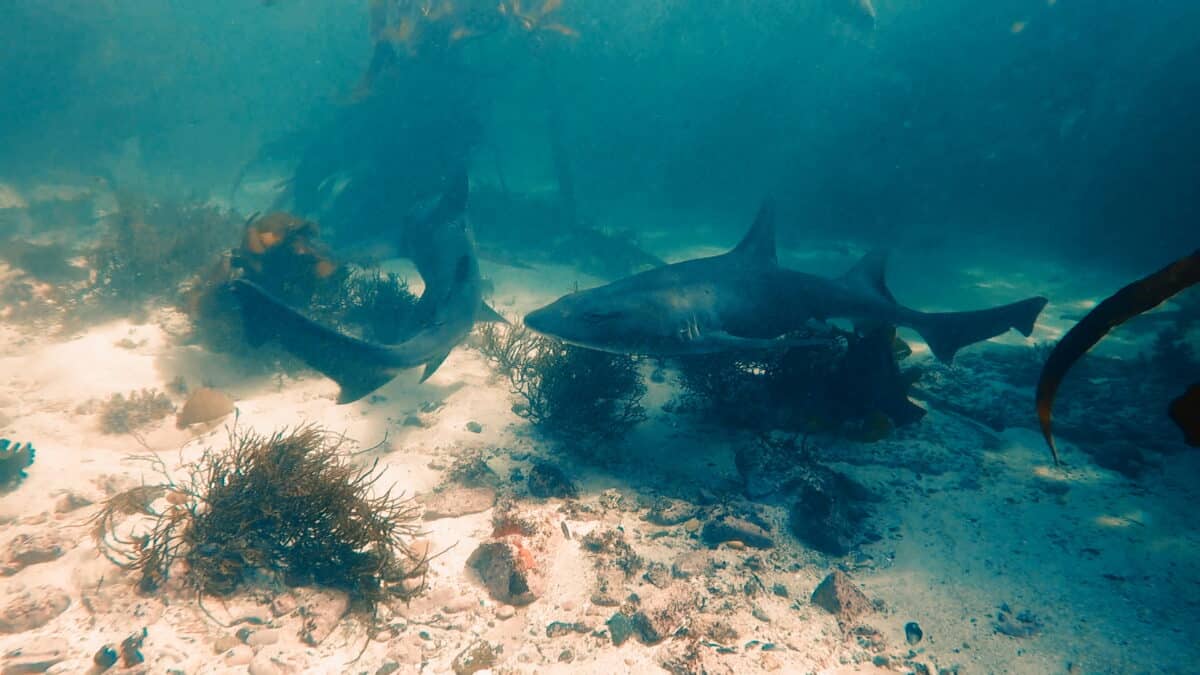
| 1. Great White Shark is a large, powerful predator known for its impressive size and breaching behavior. |
| 2. Spotted Gully Shark is a smaller shark that excels in maneuverability and adaptability, especially in reef environments. |
| 3. Great White Shark’s strengths lie in its size, power, speed, and formidable bite force. |
| 6. Spotted Gully Shark’s vulnerabilities include a weaker bite force, limiting its prey selection to smaller animals. |
| 5. Great White Shark’s vulnerabilities include less agility, high energy requirements, and reliance on ambush tactics. |
| 6. Spotted Gully Shark’s vulnerabilities include a relatively weaker bite force, limiting its prey selection to smaller animals. |
Wrapping Up with Great White Shark vs. Spotted Gully Shark
Evidently, this meticulous comparison highlights the physical characteristics, behaviors, strengths, vulnerabilities, and potential threats posed by the Great White Shark and the Spotted Gully Shark. While the Great White Shark reigns as an apex predator
Thanks for following along with me! I hope you enjoyed reading about these two entertaining animals. Next are Spotted Gully Shark vs. Octopus, Meet The Spotted Gully Shark, and Discover Surfer Touches Great White Shark And Doesn’t Realize It.
Join our Forum for free today!

- Kind Elephant Merciful To Lion Cubs - July 22, 2024
- Beachgoers Save Massive Shark Stranded In Florida - July 22, 2024
- Pit Bull Rescued From Being Chained Its Whole Life Gets A Surprise - July 21, 2024

